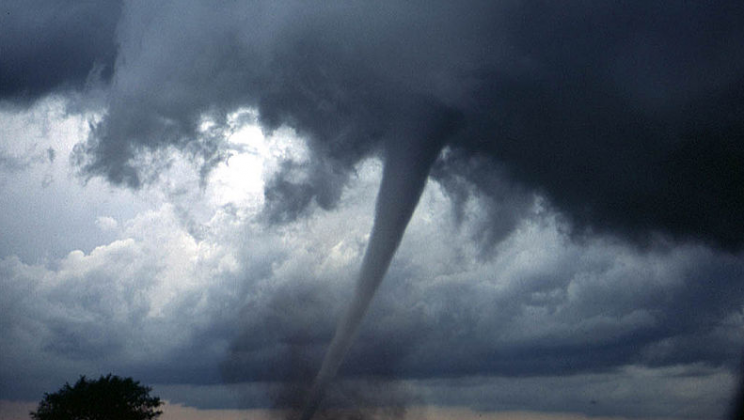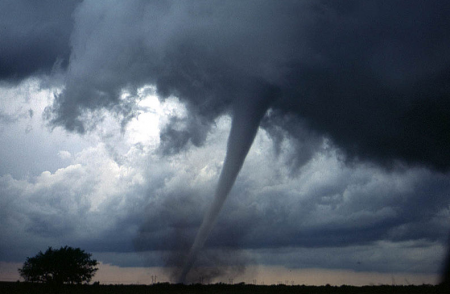How do you measure a tornado?
Posted by staff / May 21, 2013 American historyAmerican Meteorological SocietyFujita scaleOklahoma

Oklahoma’s in a state of crisis after yesterday’s EF-4 tornado which, despite the devastation caused and surprisingly, isn’t even the strongest on the Fujita scale. And this EF-4 twister destroyed a town of 55,000 people, the worst tornado in American history, says the New Yorker Magazine.
(Note: You may recall that tornadoes used to be measured by a scale beginning with the letter “F” – see below for the new way of calculating tornadoes)
The tornado that levelled much of Moore, Oklahoma, a town of fifty-five thousand south of Oklahoma City, on Monday afternoon was one of the worst in American history. At this writing, twenty-four people have been counted among the dead, including nine children. The tornado is estimated to have been between one and two miles in diameter. It stayed on the ground for at least forty minutes and travelled an estimated thirteen miles. But those numbers are not much more than guesses; ultimately, the scariest thing about tornadoes is how little we know about them.
This is how the American Meteorological Society defines a tornado:
…a tornado is “a violently rotating column of air, pendant from a cumuliform cloud or underneath a cumuliform cloud, and often (but not always) visible as a funnel cloud.”
And this from the National Oceanographic and Atmospheric Administration (N.O.A.A.):
most tornadoes are born from large, rotating thunderstorms called “supercells,” which combine four specific atmospheric factors: moisture, instability, lift, and wind shear. But no one knows exactly what quantity or combination of those factors results in a twister. N.O.A.A.’s Storm Prediction Center reports that many different initial weather conditions can lead to tornadoes, but—most perplexing of all—those same conditions frequently produce no tornadoes whatsoever. The only way to know for sure that a given weather condition will produce a tornado is if one actually appears. (In fact, tornado forecasting was once so uncertain that meteorologists at the U.S. Weather Bureau were discouraged from issuing tornado forecasts until 1950.)
Tornados typically last from a few seconds to a few minutes.
The current scale for measuring tornadoes was devised by Dr. T. Ted Fujita, a Japanese-born American meteorologist who specialized in severe storms. He looked at previous parameters and decided that they were not illustrative enough of the various strengths of these killer storms and proposed a new scale that went all the way to F12 (which, according to the New Yorker article, is the equivalent of Mach 1 winds – seen on Neptune but never on earth).
But, continues the article, there were three problems with Fujita’s proposed scale:
- it was based on observation, not measurement—tornadoes are so destructive that normal weather instruments can’t stand up to them, and they’re so unpredictable that it is difficult to deploy hardened instruments inside them.
- it didn’t take into account various forms of building construction: obviously, a big box store will stand up to a tornado better than a mobile home.
- [it] didn’t account for time: a brief, fast-moving storm with high winds might actually do less damage than a long-lasting storm with slower winds.
So now we have an Enhanced Fujita Scale, or EF measurement which takes in to account damage done. That’s how they put Monday’s storm at an EF-4 and not the maximum EF-5:
The severe damage done to buildings like the Plaza Towers Elementary School and Briarwood Elementary School, as well as the near total destruction of many single-family houses, enables scientists to categorize Monday’s tornado as an E.F.4—a violent, intense storm that nevertheless is not as bad as the most extreme kind of tornado, an E.F.5. The Enhanced Fujita scale came into use in 2007, and is now the official way to judge the impact of a tornado—at least, of the physical damage it causes.
For more, please see: New Yorker.
Photo credit: Tornado – WikiCommons
Comments are off for this post.